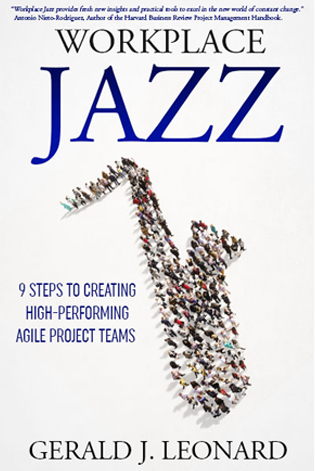Lean methodology has proven to be effective in improving the efficiency and effectiveness of both manufacturing and service processes. Its focus on eliminating waste and optimizing value creation resonates with project and program managers tasked with delivering results most effectively and efficiently. This article will explore how lean can be applied to manufacturing and service processes and the benefits of adopting this methodology.
According to a paper published in the International Journal of Production Economics, organizations implementing lean methodology experience an average productivity increase of 25%.
As a lean practitioner, you may have questions about lean methodology’s benefits and how to measure its effectiveness. Some specific questions you may have are:
- How can lean methods be applied in the service industry?
- What are some common issues organizations face when implementing lean methodology?
- How can I measure the effectiveness of lean techniques in my organization?
- How can I create a culture of continuous improvement within my organization?
- What are some best practices for implementing lean methodology?
A good metaphor for how lean can be applied to manufacturing and service processes is a sculptor chiseling away at a block of stone. Just as a sculptor removes stone to reveal a beautiful work of art, organizations can use lean methodology to chip away at inefficiencies and waste, showing an optimized and efficient process.
Lean in Manufacturing Processes
Lean methodology has been a staple of manufacturing processes for decades. It has enabled organizations to optimize operations, improve product quality, and reduce lead times. In a manufacturing process, there are several areas where lean can be applied:
- Value stream mapping is a vital aspect of lean methodology. It enables organizations to visualize their entire manufacturing process and identify waste areas. By mapping the value stream, organizations can identify areas to optimize operations, eliminate waste, and increase value creation. Value stream mapping is an ongoing process that requires continuous monitoring and improvement.
- Just-in-time (JIT) manufacturing is a critical component of lean methodology. JIT is a manufacturing strategy that emphasizes producing products only when needed. This approach enables organizations to reduce inventory levels and minimize waste. By making products only when required, organizations can avoid the costs of carrying excess inventory.
- Continuous improvement is a core principle of lean methodology. It requires organizations to evaluate their manufacturing processes and continuously identify improvement areas. Organizations can identify opportunities to optimize their processes, eliminate waste, and increase value creation by implementing a continuous improvement process.
Neuroscience research suggests that lean methodology can improve cognitive function and enhance workplace productivity. By reducing the cognitive load associated with inefficient processes, individuals can focus their attention on higher-order tasks and make more efficient use of their mental resources. This can lead to improvements in creativity, problem-solving, and decision-making.
According to a survey published in the International Journal of Lean Six Sigma found that lean methodology implementation resulted in a 32% reduction in lead times and a 25% reduction in costs.
Lean in Service Processes
While the lean methodology has been a staple of manufacturing processes for decades, it has recently gained popularity in service processes. Its focus on optimizing value creation and eliminating waste resonates with organizations looking to improve service delivery. In a service process, there are several areas where lean can be applied:
- Process Mapping: Process mapping is a critical aspect of lean methodology in service processes. It enables organizations to visualize their entire service delivery process and identify areas of waste. By mapping the process, organizations can identify areas to optimize operations, eliminate waste, and increase value creation.
- Agile leadership is a critical component of lean methodology in service processes. It requires organizations to be responsive to changing customer needs and expectations. Organizations can quickly respond to customer needs by adopting an agile leadership approach and adapting their service delivery processes.
- Standard work procedures are a core component of lean methodology in service processes. They provide a standard approach to service delivery, enabling organizations to minimize waste and optimize value creation. By implementing standard work procedures, organizations can ensure consistent service delivery.
A study published in the Journal of Operations Management found that lean methodology implementation positively correlates with quality and delivery performance improvements.
Benefits of Lean Methodology
There are several benefits to adopting lean methodology in both manufacturing and service processes:
- Increased Efficiency – Lean methodology enables organizations to optimize their processes, reducing waste and increasing efficiency. Organizations can reduce lead times, minimize inventory levels, and optimize service delivery by implementing lean methodology.
- Improved Quality – Lean methodology enables organizations to identify areas of waste and inefficiency, resulting in improved product and service quality. Organizations can ensure their products and services exceed customer expectations by focusing on value creation and eliminating waste.
- Enhanced Customer Satisfaction – By adopting lean methodology, organizations can improve their product and service quality, enhancing customer satisfaction. Customers value organizations that are responsive to their needs and deliver high-quality products and services.
Lean methodology is a powerful tool for organizations looking to optimize their manufacturing and service processes. Organizations can increase efficiency, improve quality, and enhance customer satisfaction by focusing on value creation and eliminating waste. Project and program managers, as well as professional meeting planners and corporate professionals, can benefit from adopting lean methodology in their organizations.
To effectively implement the lean methodology, organizations must first understand their current processes and identify areas of waste. This requires mapping the value stream and identifying opportunities for improvement. Once the areas of debris have been identified, organizations can implement continuous improvement processes to optimize their operations, eliminate waste, and increase value creation.
If you want to improve the efficiency and effectiveness of your manufacturing or service processes, implementing lean methodology can help.
Take action today by conducting a value stream mapping exercise to identify waste and inefficiency in your processes. Involve your employees in continuous improvement and give them the tools and resources to make meaningful contributions. Standardize work procedures to ensure consistency and quality and implement visual management tools to make it easy to identify and address issues in real-time. If you need help implementing lean methodology in your organization, contact us at the Leonard Productivity Intelligence Institute to identify opportunities for continuous improvement.












